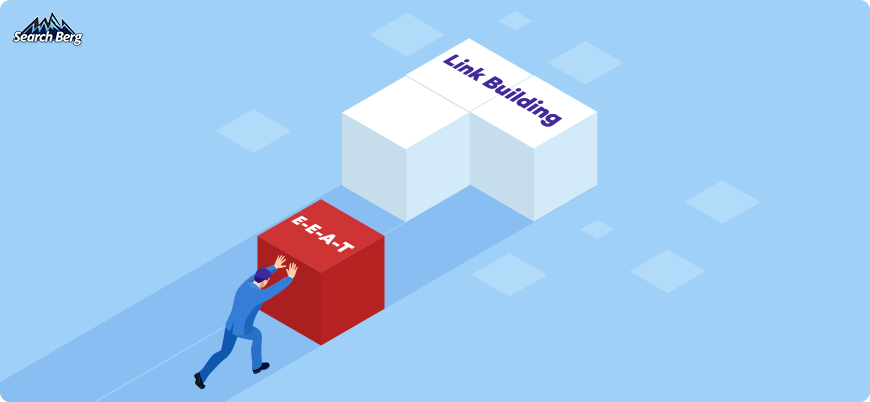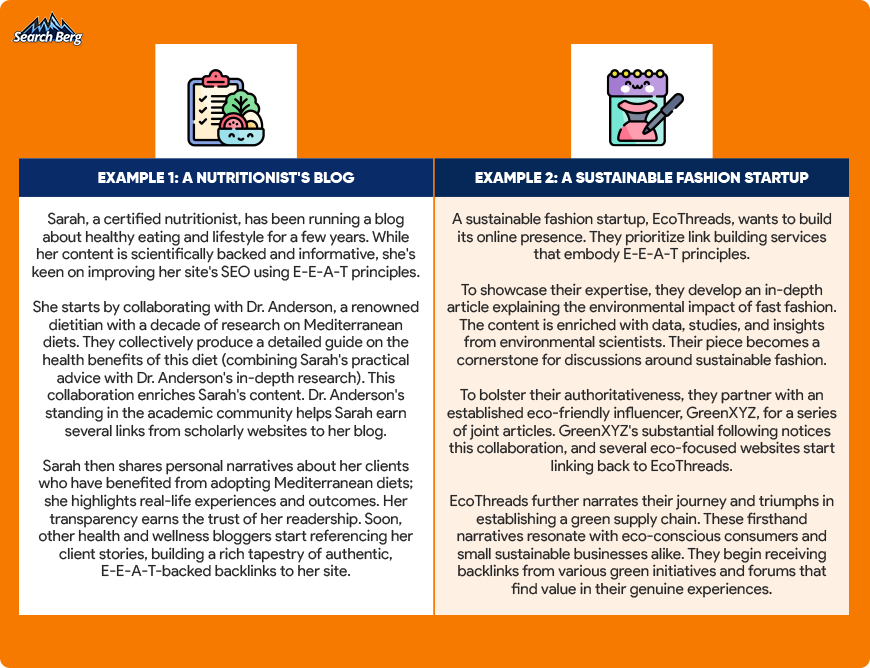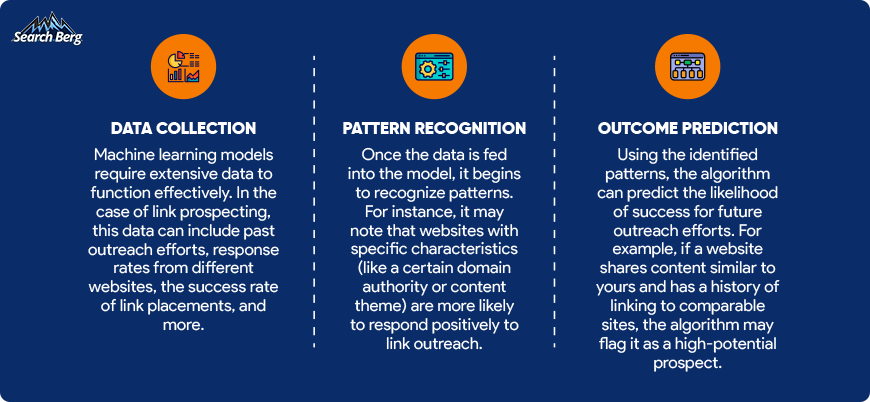Link Building Trends to Watch Out for in 2023

Backlinks.
These unassuming connectors have an uncanny knack for catapulting websites from the depths of obscurity to the dazzling limelight of search engine supremacy.
But let’s face it. Backlinks aren’t just clicks; they’re digital pats on the back that say, “Hey, this content here? It’s valuable, authoritative, and trustworthy. You need to pay attention to it!”
They’re nods of approval from one website to another. And they’re worth their weight in digital gold! But the process of building backlinks, link building, isn’t exactly a walk in the park. You can’t just roll out a strategy or two and expect the cards to fall into place.
Link building must be mastered. And you can only do so when you keep up with the evolving landscape, latest trends, and algorithmic developments.
In this blog, we’ll walk you through the most power-packed link building trends for 2023. Why are these trends so important? How can you jump on the bandwagon? And where do link building services fit into this intricate puzzle? Let’s peel back the layers one by one!
1. The Rise of E-E-A-T in Link Evaluation

Search engines have evolved tremendously within the span of a few years. The battle for top search engine result page (SERP) rankings is no longer just about keywords or sheer link volume. Now, the quality of links matters more than ever before.
As we delve deeper into 2023, a concept previously whispered among SEO professionals is now being discussed loudly: the significance of E-E-A-T in link evaluation. So, what is E-E-A-T, and why is it taking center stage in the domain of link building services?
1.1. Understanding E-E-A-T: A Deep Dive
For all its benefits, the digital landscape is also a breeding ground for misinformation. The clarity and credibility of information is paramount. This leads us to the heart of E-E-A-T (experience, expertise, authoritativeness, and trustworthiness) and its profound impact on search and content evaluation.
But what exactly is E-E-A-T? And why has it become such an instrumental factor in today’s SEO landscape?
The concept of E-E-A-T originated from Google’s Search Quality Rater Guidelines. These guidelines are essentially a blueprint used by human evaluators to assess the quality of search results. Google strives to provide the most relevant and accurate search results to users. E-E-A-T, in this framework, is a yardstick for content credibility.
- Experience
Experience refers to a content creator’s direct personal involvement or encounters with their subject matter. It emphasizes firsthand knowledge, personal narratives, and authentic insights derived from individual interactions with a topic, product, or service.
In essence, it’s the embodiment of the saying, “Been there, done that.”
Unique anecdotes, detailed descriptions, personal photographs, and other forms of firsthand evidence can indicate a creator’s experience. Content that resonates with users (evidenced by engagement metrics like time spent on page, comments, and shares) can indirectly influence SEO.
Authentic, experience-driven content often garners better engagement.
- Expertise
Expertise refers to deep knowledge or skill in a particular area. In the context of digital content, it’s about presenting information that reflects a comprehensive understanding of the subject at hand.
In practical terms, a piece on cardiovascular health penned by a cardiologist would be considered to demonstrate high expertise.
However, it’s worth noting that every topic doesn’t necessitate formal education. For hobbies or experiential topics, like personal blogs, lived experiences and personal mastery can also demonstrate expertise.
As the internet becomes increasingly saturated with information, users want to be assured that the content they consume comes from a knowledgeable source. Expertise guarantees depth and precision; it masterfully distinguishes content from the sea of generic information.
- Authoritativeness
While expertise is about depth of knowledge, authoritativeness is about recognition and respect in a particular field or subject.
Typically, the more external entities (e.g., reputable websites, industry leaders, or institutions) recognize and reference a source, the more authoritative it is considered.
Backlinks, mentions, and citations from esteemed sources can bolster authoritativeness. Authoritativeness builds a bridge of trust with the audience. When users see that a source or content piece is acknowledged by others in the field, they’re more inclined to trust its validity.
- Trustworthiness
Trustworthiness is the integrity and reliability of a source or website. It assures users that the information presented is accurate, genuine, and free from deceit.
Trustworthiness is evaluated by several factors. These include the security of the website (SSL certificates), transparency (providing clear citations, sources, or authorship), and a track record of consistent and honest information.
In the age of fake news and misinformation, users are becoming more discerning about where they gather information. Trustworthiness ensures that the audience can rely on the content without reservations.
1.2. Incorporating E-E-A-T Into Your Link Building Strategy

Incorporating E-E-A-T into a backlink building service’s action plan is more than a trend; it’s a necessary evolution to align with modern SEO practices. This approach ensures a website ranks well and offers genuine value to users.
What should be your starting point? Prioritizing quality over quantity. Instead of amassing dozens of backlinks from various sources, seek a select few from high-authority and reputable websites. These links will do more than just fill your glass with SEO juice; they’ll also establish your site as a trusted, authoritative, reputable voice in your domain.
For instance, a single link from a recognized expert in your industry can significantly outweigh multiple links from lesser-known or generic websites.
But how does one ensure top-notch quality? By diligently and meticulously assessing potential linking partners. Before seeking a link, take a closer look at the website’s content history, authors’ expertise, any awards or recognition they’ve received, and even user reviews.
This assessment helps ascertain the E-E-A-T value of the prospective link. You’ll be able to answer the million-dollar question, “Will this link add tangible value to my site’s reputation and standing?”
While the technicalities of link building are essential, the human element is just as important. The era of transactional link exchanges is waning. Today, authentic relationship-building takes precedence.
By forging genuine relationships with domain experts, authoritative websites, and trusted industry voices, you’ll enjoy a greater chance of securing organic and meaningful backlink opportunities. These aren’t just links; they’re endorsements from respected figures in the field.
The addition of “experience” to the E-E-A-T framework offers another dimension. Content is no longer just about presenting facts; it’s about embedding personal experiences and authentic encounters into the narrative.
This approach resonates with audiences who seek relatable insights. This authenticity (in the form of case studies, personal anecdotes, detailed product reviews, etc.) makes your content more link-worthy; it provides a unique perspective often sought after by other content creators.
We also recommend periodically scrutinizing your backlink profile. Just like your content can become outdated, links can also lose their relevance or value. A regular audit ensures that all your inbound links align with E-E-A-T principles; you’ll be able to proactively remove or disavow links that may detract from your site’s trustworthiness.
Thought leadership is also instrumental. By consistently producing deeply researched, experience-laden, and expert-driven content, you’ll establish your website as the go-to resource in its niche.
Authoritative content naturally garners attention and, by extension, backlinks. It’s a testament to the depth and breadth of your expertise.
Recommended Read: Backlink Quality vs. Quantity: What’s More Important?
1.3. Examples

2. Integration of AI and Machine Learning in Link Building Strategies

Artificial intelligence (AI) and machine learning (ML) are revolutionizing the domain of link building services. Historically, link building was a manual and often tedious process. SEO professionals would seek out potential linking sites, send outreach emails, and negotiate link placements. It was time-consuming, and the results were always a mixed bag.
With the onset of AI and ML, the dynamics of this process have shifted dramatically. These technologies can process vast amounts of data at lightning speeds, analyze patterns, and make predictions that humans may overlook.
2.1. Predictive Analysis and Link Prospecting
One of the primary ways AI and ML are influencing link building is through predictive analysis. Predictive analysis, at its core, involves using statistical algorithms and machine learning strategies to identify the likelihood of future outcomes based on historical data.
In the context of link building, this becomes a powerful tool, primarily when harnessed for link prospecting. Let’s look at how it works.

Why would you consider dabbling in the predictive analysis waters? The answer is simple: greater efficiency.
Instead of spending hours manually researching potential link opportunities, SEO professionals can rely on predictive models to provide a list of high-potential prospects in a fraction of the time.
Predictive analysis can also significantly improve the hit rate of outreach efforts. The model targets sites it deems high-potential. The outcome? A greater chance of securing valuable backlinks.
We also cannot ignore the continuous learning factor. The beauty of machine learning is that it’s iterative. As more data is collected over time, the model becomes more accurate in its predictions. So, the more you use it for link prospecting, the better it gets at providing valuable suggestions.
While predictive analysis offers substantial advantages, it has its fair share of challenges. For one, the quality of predictions hinges on the quality of the input data. If the historical data used to train the model is flawed or limited, it can lead to inaccurate predictions.
Moreover, while predictive analysis can provide a direction, it can’t account for all the qualitative aspects of link building. Personal relationships, the tone of outreach communication, and the evolving priorities of website owners can all influence the success of link building efforts. And these are elements that algorithms may not fully capture.
2.2. Enhanced Personalization in Outreach
Personalization is no longer a luxury; it’s an expectation. Personalized outreach in link building ensures that communication is tailored to the recipient’s preferences, previous interactions, and potential interests.
Enhanced personalization is a product of both AI-driven insights and meticulous strategy. At its core, enhanced personalization is about crafting outreach communication that resonates with the recipient. It’s a critical component of stellar link building services.
Generic emails and messages are easily identifiable and often discarded. Instead, successful link building outreach feels custom-tailored. It’s like a tailored glove that hugs every finger without leaving so much as a single crease.
AI plays a pivotal role by analyzing vast data sets ranging from past interactions between sites to the content preferences of target domains. By understanding these preferences and behaviors, AI tools can segment outreach lists and adjust the message’s tone, content, or call-to-action to suit the recipient. This increased relevance significantly heightens the chance of a positive response.
However, it’s also important to understand that personalization is more than just addressing the recipient by their first name. It’s about creating a message that aligns with their values, interests, and current content direction. You must demonstrate that you’ve done your homework and genuinely value the potential relationship.
Recommended Read: A Quick 8-Step Backlink Audit Guide
3. Shift Toward Relationship-Based Link Building

In the ever-evolving world of SEO, there’s a noticeable shift from transactional link building strategies to a more relationship-based approach.
As search engines continue to refine their algorithms to prioritize genuine, high-quality content and connections, the old methods of simply acquiring as many links as possible have lost their effectiveness.
In 2023, the spotlight is on cultivating meaningful relationships as the foundation of sustainable link building services.
3.1. Why Relationship-Based Link Building Works
The unparalleled value of genuine connections and human-centric strategies cannot be ignored. When you dig deeper, you’ll find relationship-based link building at the heart of this shift.
This method, which emphasizes authentic partnerships over mere transactions, is proving to be far more effective and enduring than traditional tactics. Let’s explore the reasons behind its growing appeal and success:
- Natural and Organic: Unlike links that are purchased or come from templated outreach, relationship-based links arise from genuine interactions and collaborations.
These links are inherently more natural and resonate more with both users and search engines. They aren’t forced or shoehorned into content but are a genuine recommendation or reference.
- Enhanced Trustworthiness: Trust is an invaluable currency in the digital space. Links born out of established relationships are viewed as endorsements from trusted entities. Search engines reward high credibility with enviable rankings.
- Higher Quality and Relevance: When you build a link based on a relationship, it’s often with an entity in a related or complementary niche. This ensures that the link isn’t just a random insertion but is contextually relevant, adding more weight from an SEO perspective. These links align with the content’s theme and cater to the audience’s genuine interests.
- Protection from Algorithmic Fluctuations: Search engine algorithms are constantly evolving. While tactics that try to “game” the system may work temporarily, they often become obsolete or even detrimental with the next update.
Owing to their organic and genuine nature, relationship-based links are less susceptible to these fluctuations; they offer stability in a dynamic digital landscape.
- Encourages Mutual Growth: A key facet of relationship-based link building is the reciprocity it fosters. Partnerships built on mutual respect and shared goals often lead to collaborative efforts, joint content initiatives, and shared promotions. This mutual support ensures that both parties benefit; their combined reach and impact are amplified.
- Future Opportunities: Relationships in the digital realm, much like in the real world, can open doors to future opportunities. Today’s content collaboration can evolve into tomorrow’s joint webinar, shared research project, or co-hosted event.
These evolving collaborations continually refresh and expand the link building landscape for the involved entities.
- Cost-Effective in the Long Run: While building and nurturing relationships may sound time-consuming compared to transactional link acquisition, the long-term ROI is often higher.
Relationship-based links are more durable, lead to additional opportunities, and often come without the direct costs associated with paid link placements.
- Diverse and Rich Backlink Profile: Engaging with various entities across niches and platforms results in a diverse set of backlinks. This is a positive signal to search engines; it indicates organic growth and positively contributes to search engine rankings.
3.2. Building and Cultivating Relationships
In the vast and interconnected world of the internet, building and cultivating genuine relationships is both an art and a science.
These relationships serve as foundational elements for long-term success. They go beyond mere transactions and provide enduring value through trust, collaboration, and mutual growth.
Let’s take a deep dive into the intricacies of fostering these pivotal connections:
- Start with Genuine Interest: The foundation of any lasting relationship is genuine interest. Instead of approaching a potential link partner with immediate gains in mind, consider what you genuinely admire about their work.
Engage with their content, understand their audience, and identify how a partnership could be mutually beneficial. Authenticity sets the stage for meaningful interactions.
- Regular and Meaningful Engagement: Digital relationships, much like traditional ones, thrive on consistency. Regularly engage with potential and existing partners on platforms like social media, blogs, or forums.
But remember, it’s not about the frequency alone but the quality of engagement. Genuine comments, insightful feedback, and constructive discussions can elevate your standing in their eyes.
- Provide Value Upfront: Before expecting a favor or collaboration, think about what you can offer without expecting anything in return. This could be in the form of sharing their content, referencing them in your articles, or offering a platform for them to share their insights.
By providing value upfront, you’ll show goodwill and establish a foundation of trust.
- Personalized Outreach: When reaching out for potential collaborations, generic, templated messages rarely make the cut. Instead, craft personalized outreach emails or messages that show you’ve taken the time to understand their work and see a potential alignment.
Highlight past interactions, discuss shared interests, and propose collaborative efforts that align with their objectives.
- Collaborative Ventures: One of the most effective ways to solidify a relationship is through joint projects. Collaborative content pieces, joint webinars, shared research initiatives, or co-hosted events can bring both parties closer.
These ventures result in mutual growth and provide ample opportunities for organic link exchanges and references.
- Transparency and Honesty: In all interactions, be transparent about your intentions and honest in your feedback. If a proposed collaboration doesn’t align with your brand’s vision or values, communicate it respectfully.
- Celebrate and Support: Celebrate your partners’ success. Share their milestones, engage with their achievements, and offer support during challenging times. This mutual camaraderie will help keep the relationship strong and reciprocative.
- Continuous Nurturing: Building a relationship is just the beginning. Continuous nurturing through regular check-ins, feedback sessions, or brainstorming meetings ensures the connection remains vibrant and productive. Stay updated about their endeavors and look for new avenues where both parties can benefit!
4. The Impact of Voice Search on Backlink Strategies

The advent of voice search has thrown a delightful curveball into the game of SEO and, by extension, link building strategies. In 2023, a significant portion of online searches are now being conducted via voice-activated devices like smartphones, smart speakers, and home assistants.
This shift toward voice search is reshaping the way users seek information and, in turn, how SEO professionals approach link building and optimization strategies.
4.1. A Shift Towards Conversational Queries

There has been a transformative shift in how people search for information. One of the most prominent changes has been the evolution of conversational queries.
As voice search continues its upward trajectory, it brings along a distinct search pattern that contrasts sharply with the traditional, text-based approach.
Conversational queries are characterized by their natural, often colloquial tone, mirroring the way humans speak in day-to-day conversations. Instead of fragmented keywords like “weather Paris,” voice search users might ask, “What’s the weather like in Paris today?”
This distinction is more than just syntactical. It represents a more intuitive, human-centric approach to seeking information.
With the rise of artificial intelligence and natural language processing, search engines have become adept at understanding context, nuance, and intent behind these queries. As a result, content creators and SEO professionals are challenged to rethink their keyword strategies.
It’s no longer sufficient to target high-volume keywords alone. A successful strategy now includes long-tail keywords and phrases that align with the way real people talk and ask questions. This emphasis on natural language means content must be crafted to answer specific questions and provide value to the user.
Recommended Read: 6 Tips to Optimize Your eCommerce Store for Voice Search
4.2. Local SEO Takes Center Stage
The immediacy and convenience of voice search have made it a favorite for users seeking local information. Whether they’re trying to find a nearby Italian restaurant, locate the closest pharmacy, or check the hours of the local library, web users can conveniently and quickly use voice search for guidance. It serves as a digital concierge!
This increasing reliance on voice search for local inquiries has propelled local SEO into the spotlight. Local SEO is no longer just a niche aspect of digital marketing; it’s central to businesses aiming to capture the attention of local consumers.
Ensuring accurate and consistent NAP (name, address, phone number) across all online platforms is fundamental. Any discrepancy in this data can lead to missed opportunities and misdirected customers.
Securing local backlinks has become even more vital. Links from local newspapers, blogs, community websites, or regional directories can significantly bolster a business’s local authority in the eyes of search engines. These backlinks improve search rankings and drive targeted, local traffic to the business.
And, of course, reviews also play a critical role in local SEO. Voice search users often ask for “the best” or “top-rated” services. Offering a wealth of positive reviews is a great way to set your business apart and ensure it’s recommended by voice assistants.
Lastly, optimizing for “near me” searches is pivotal. As users increasingly rely on voice search to find services and businesses in their vicinity, ensuring content and metadata are optimized for these local queries can yield substantial dividends.
Hire link building services to master this technique. Local SEO may sound pretty straightforward at first. However, you need an ultra-refined approach to achieve excellent results. Turn to experienced backlink building service providers who can confidently take the reins for you.
5. Visual Search and Image Link Building Opportunities

Visual search is no longer the stuff of science fiction; it’s a reality that’s altering the way users interact with search engines. With platforms like Google Lens, Pinterest Lens, and Bing Visual Search, users can now upload an image to generate search results.
Whether they’re trying to identify a species of plant or looking for a similar piece of furniture, web users can leverage visual search to enjoy a more intuitive and interactive user experience.
But what does this mean for link building? The visual search revolution opens up a new frontier for SEO professionals and adds another layer of complexity to link building strategies.
5.1. Image Optimization as a Link Building Goldmine
Image optimization is rapidly evolving from a mere side note in SEO strategy to a primary player (particularly in the era of visual search). This shift is creating unparalleled opportunities for linkbuilding efforts that many businesses are yet to fully leverage.
But why are optimized images so invaluable for link building? The answer lies in a combination of visibility, relevance, and user experience.
Firstly, let’s consider visibility. Visual search engines crawl the web for images using complex algorithms that look at various factors like the image’s metadata, file name, and alt text.
Search engines also consider the context in which the image is placed, i.e., the text that surrounds it, how it aligns with the content, and so on.
When an image is finely optimized to rank highly in visual search, it gains visibility that extends beyond your website. As more people encounter your image during their own searches, the likelihood of them linking back to your website as a resource increases significantly.
Now, onto relevance. The digital realm is awash with content, and the fight for consumer attention is fierce. Visual content often serves as a quicker, more immediate form of engagement. Whether you’re discussing the latest fashion trends or breaking down complex scientific theories, relevant images that augment your content are more likely to catch a reader’s eye.
If your image provides valuable context or adds a layer of understanding to the subject matter, it becomes a prime candidate for other content creators to link back to. An optimized, high-quality image signals that your content is relevant and authoritative.
Lastly, there’s the aspect of user experience. Gone are the days when web users were willing to squint at pixelated images or wait for large files to load. High-quality, fast-loading, and responsive images contribute to a smoother, more enjoyable user experience.
When other sites link back to your optimized images, they implicitly endorse the quality of your site, which can improve your site’s overall domain authority. The higher your domain authority, the better your rankings! It’s like creating a virtuous cycle that feeds into your ongoing link building strategy.
5.2. How to Master the Art of Image Link Building
Mastering the art of image link building involves a blend of creativity, technical know-how, and strategic thinking. It’s not merely about adding pictures to your content; it’s about making said images a core part of your overall link building service plan.
First, you need to start with high-quality, original images. Stock photos may be convenient, but they won’t offer the unique appeal that draws other content creators to link back to your site. Whether you’re employing professional photography or creating custom graphics, ensure your visual assets are high-resolution, relevant, and value-added.
The goal is to create images that other websites would want to use. Compel them to link back to you as the original source.
The next step involves meticulous optimization. Simply uploading an image with a generic filename and hoping for the best won’t suffice. Each image should be optimized meticulously.
Set descriptive file names, compress the file size without compromising quality, and add relevant metadata like alt text. Use keywords naturally in the alt text and the surrounding content to improve the image’s search visibility.
Context is crucial. The image shouldn’t just complement your written content but also serve as a standalone piece that offers significant value.
Select images that are directly related to the subject matter and place them strategically within the content to enhance understanding or offer a different perspective. If your image appears random or forced, it won’t encourage backlinks. However, an image that provides clarity or adds value will quickly become a linkable asset.
It’s also important to venture beyond static images to include a variety of visual content types, e.g., infographics, charts, and even video stills. Infographics are particularly useful as they can condense a lot of information into an easily digestible format.
By producing different types of visual content, you’ll increase your chances of attracting a wider range of backlinks from diverse sources.
Finally, you have to be proactive in your outreach. If you’ve created an image that you believe adds significant value, don’t wait for others to stumble upon it. Actively reach out to industry influencers, bloggers, or journalists who might find it useful for their content.
Platforms like Twitter and LinkedIn can be effective channels for this kind of outreach. You can also submit your visual assets to image directories and communities related to your niche; this is an excellent way to further increase your exposure and potential for backlinks.
Want to master the image link building ropes? Instead of turning to your in-house team, turn to experienced, dedicated, and knowledgeable SEO experts who specialize in link building services. Search Berg can take over for you!
6. Harnessing the Power of Podcasts and Audio Content for Backlinks

The popularity of podcasts and other forms of audio content has been skyrocketing. And it’s not just because they offer a convenient way for audiences to consume information.
These audio platforms also serve as a unique opportunity for SEO experts and marketers to enhance their link building campaigns.
Podcasts and audio content can act as incredibly potent linkable assets; they’re both shareable and rich in information. When you appear as a guest on a podcast or even host your own, you can often secure a backlink from the podcast’s website, show notes, or transcript pages.
Additionally, podcasts create opportunities for follow-up articles, social shares, and even crowd-sourced content. Each avenue opens up new potential for backlinks!
6.1. Maximize Exposure Through Strategic Podcast Partnerships
This goes beyond merely appearing on a show or having a guest on your own podcast. It’s about leveraging that appearance for backlinks. These partnerships can serve as a critical pillar in a diversified link building strategy. Here’s why.
When you collaborate with a podcast that’s closely aligned with your industry, the audience is already primed for the kind of content or services you offer. This makes the backlinks you gain from such collaborations more valuable as they come from a relevant source and point to an audience with a built-in interest in your field.
Typically, your name and website are included in the podcast episode’s description, and most podcast hosts will gladly link to your site either in the show notes on their website or within the podcast platform itself. These links are particularly beneficial as they are often “do-follow,” which means they pass on SEO value to your site.
But the link building benefits of strategic podcast partnerships don’t stop at the immediate backlink from the episode page. These partnerships often result in a ripple effect.
Listeners who find your content valuable may write blog posts or articles referencing the podcast episode, offering additional backlinks. You can also use the podcast episode as a basis for guest posts on other sites, expanding on the topics discussed during the show.
In these guest posts, you can link back to the original podcast episode, creating a network of interlinked content that boosts the SEO value of both your site and the podcast.
Additionally, leveraging social media promotion around the episode can create buzz and encourage shares, which, while not as effective as direct backlinks, still contribute to your site’s overall authority and reach. You and the podcast host can also cross-promote the episode through newsletters (each linking back to the other’s website) and create yet another channel for valuable backlinks.
6.2. Turning Audio Content Into a Multichannel Link Building Strategy
This essentially means extending the reach and utility of your podcast episodes or other audio content across various platforms and formats. The idea is to take one piece of high-quality audio content and adapt it into multiple assets that are conducive to link building.
Let’s start with transcripts. Every podcast episode can be transcribed and transformed into a blog post that serves as fresh content for your website. These transcripts-turned-articles can include internal links to other relevant content on your site and serve as resource material for other blogs or publications (potentially leading to backlinks).
It’s also easier for search engines to crawl text-based content than audio. To put it simply, transcripts increase your original podcast episode’s SEO potential.
Next, consider the concept of ‘bite-sized’ sharing. Take key insights, interesting quotes, or critical segments from your podcast and turn them into smaller clips or quote graphics. These can be shared on social media platforms, forums, and even email newsletters.
While social shares don’t carry the SEO weight of a genuine backlink, they do contribute to online visibility and could result in natural link building when people begin to reference these bite-sized pieces of content in their own articles or blog posts.
User-generated content is another exciting avenue to explore. Encouraging listeners to share their thoughts or create content around an episode can yield a multitude of potential backlinks. This could range from a listener’s personal blog post reviewing the episode to a discussion on a niche forum that includes a link to your content.
Encouraging this kind of engagement can be as simple as asking for shares and discussions at the end of each episode. You could also run a promotional contest where listeners can win prizes for the best review or insight related to an episode.
Finally, don’t underestimate the power of collaborative content. Partner with other content creators to develop mutually beneficial content.
For instance, if your podcast episode discusses the latest trends in digital marketing, it might make sense to collaborate with a software-as-a-service (SaaS) provider in the marketing space. You could contribute a guest blog post on their site, linking back to your podcast episode, while they could provide an exclusive offer to your podcast listeners.
This opens up opportunities for both parties to gain valuable backlinks and broaden their respective audiences.
7. Unlinked Brand Mentions: The Untapped Potential

If you’ve been keeping an eye on your brand mentions online but haven’t thought about how they could influence your link building strategy, it’s time for a wake-up call.
Unlinked brand mentions represent an often-overlooked treasure trove of opportunities for acquiring valuable backlinks. Unlinked mentions are instances when your brand is talked about on websites, blogs, or social media platforms, but there’s no hyperlink leading back to your site.
These mentions indicate that people are discussing your brand, acknowledging its presence, or even recommending it. However, without the accompanying hyperlink, you’re missing out on the SEO benefits of a backlink.
7.1. Converting Mentions Into Links
Turning an unlinked brand mention into a backlink is usually low-hanging fruit; it often requires nothing more than a polite outreach email to the website owner or author.
You’d be surprised how many are willing to add a link (especially if your brand or content adds value to their audience)!
However, not all mentions are created equal. For a more targeted approach, focus on mentions on sites with high domain authority or within content that’s directly related to your niche.
When you reach out, make it easy for them to say yes. Provide the specific URL you’d like them to link to and briefly explain how this link would enrich their content or offer additional value to their readers. Personalization is key; nobody wants to feel like they’re receiving a mass email.
People are busy; your initial email may get lost in the shuffle. A polite follow-up email a week or so after the first can often yield successful results. Keep it brief and to the point. Simply inquire if they had a chance to consider your proposal.
7.2. Leveraging Monitoring Tools for Ongoing Benefits
The digital landscape is incredibly dynamic. Without even knowing it, brands may get mentioned across various platforms every now and then.
While this constant activity can be a powerful indicator of your brand’s growing influence, it can also present a logistical challenge: how do you keep track of all these mentions (particularly the unlinked ones that represent untapped link building opportunities)? This is where you start leveraging monitoring tools.
Tools like Google Alerts can be indispensable allies in your quest for more backlinks. These tools automate the tedious process of scanning the web for mentions of your brand, products, or services.
Once set up, they send real-time alerts directly to your inbox whenever a new mention is discovered. This saves an enormous amount of time and ensures that you don’t miss any potential opportunities.
But it’s not just about identifying mentions; it’s about evaluating them too. These tools often come with analytics features that help you assess the quality and potential SEO value of a mention.
For example, you may obtain data on the domain authority of the mentioning site, the context in which your brand was mentioned, and even the sentiment of the mention (positive, neutral, or negative).
Furthermore, monitoring tools can help you measure the effectiveness of your link building efforts over time. As you convert unlinked mentions into backlinks, you can track how these new links impact your site’s traffic and search engine rankings.
Are they bringing in qualified leads? Are they increasing your brand’s authority? This data can inform future strategies and help you fine-tune your approach for even better results.
It’s also important to note that monitoring tools allow for long-term relationship-building. When you’re alerted to a new mention, you’re not just gaining a one-time opportunity for a backlink; you’re also discovering another member of your online community who already finds your brand noteworthy.
This opens the door for future collaborations, guest posts, or even partnerships; it creates a cycle of ongoing benefits that extend far beyond a single backlink.
By making monitoring tools a central part of your link building strategy, you’re essentially installing a set of extra eyes and ears that are always on the lookout for opportunities. And these aren’t just any opportunities; they’re highly targeted, qualified, relevant, and aligned with your broader marketing and SEO objectives.
This systematic approach maximizes link building efficiency and turns an otherwise cumbersome process into a streamlined strategy.
8. Diversifying Link Sources with Niche Platforms and Communities
Variety isn’t just the spice of life; it’s a necessity. Search engines, particularly Google, are getting increasingly smarter at evaluating backlink profiles. A backlink profile dominated by links from just one or two types of sources can raise red flags and even lead to diminished SEO benefits.
The solution is simple: diversifying your link sources across various niche platforms and communities. This is an excellent way to bolster your backlink profile and improve your engagement with specialized audiences.
8.1. The Goldmine of Niche Platforms
The allure of niche platforms lies in their specialized focus and highly engaged communities. These are spaces where people with specific interests or expertise congregate to discuss, debate, and share resources. Such targeted audiences offer a level of relevance and engagement that you’d be hard-pressed to find in more generalized platforms.
These platforms usually possess a strong sense of community and authority within their specific subject matter. This means that a backlink from a well-respected niche platform can carry significant weight (especially when it comes to domain relevance).
While a backlink from a major news outlet is undoubtedly valuable, a link from a respected platform within your industry can be equally potent because it carries an implicit endorsement from a community of experts or enthusiasts.
Additionally, the focused nature of niche platforms often means that their audiences are more engaged, knowledgeable, and potentially more willing to click through a relevant link. The conversion rate could also be higher because these individuals are already interested in or in need of the products, services, or information you offer.
Essentially, you’re not casting a wide net into a vast ocean; you’re fishing in a barrel filled with fish that already like the bait you’re offering.
However, it’s worth noting that the specialized nature of these platforms often comes with a heightened expectation for quality and relevance. People come to these platforms for expert information, meaningful discussions, and high-quality resources.
Any link building efforts in such environments must be approached tactfully. The content you link to must be genuinely valuable and relevant to the community’s focus. Otherwise, your links will be ignored at best and could damage your reputation at worst.
8.2. Leveraging Community Engagement
Community engagement is much more than a buzzword; it’s a strategy that transcends transactional interactions to forge meaningful relationships. These relationships can yield high-quality backlinks that drive highly targeted and engaged traffic to your site.
The key to leveraging community engagement for link building lies in understanding the dynamics of the community you’re targeting and positioning yourself as a valuable member.
When you engage with a niche community, you step into a space that already has established norms, influential figures, and a constant exchange of information. Instead of arriving with the overt intention to build links, start by genuinely participating in conversations, sharing insights, and providing value.
Answer questions with depth and accuracy, comment meaningfully on others’ posts, and share relevant content that adds to the ongoing conversations.
Once you’ve built up a reputation as a knowledgeable and helpful community member, you’ve earned the social currency needed to share your links in a way that will be welcomed rather than shunned.
Now, when you post a link to a piece of your content that solves a problem, answers a question, or adds a new perspective, you’re not just dropping a link; you’re providing a resource that the community values. This can lead to higher click-through rates and more engagement with your content. The weight of your backlinks will increase significantly.
Active community engagement offers a unique form of social listening; it allows you to understand the pain points, preferences, and discussions that are shaping your niche. This information is gold for crafting content that resonates with your target audience and earns additional backlinks organically.
As community members start to recognize the value you bring, they’re more likely to share your content within and outside the community, leading to a snowball effect of link building opportunities.
Let’s Build Some Links!

Feeling overwhelmed? That’s what we’re here for!
As important as link building is, it can feel equally overwhelming and draining if you’re unfamiliar with the landscape.
At Search Berg, our job is to equip you with the knowledge you need to understand the wider landscape, make the right calls, and steer your business forward.
Now that you have a tight grasp of the top link building trends for 2023, it’s time to get the wheels moving. Search Berg is ready to take the reins!
As an experienced, reputable, and trusted SEO company, we offer professional link building services to help you get seen by your target audience, climb Google SERPs, make enviable sales, and prompt staggering growth.
When you hire link building services, prioritize experience, expertise, and results. At Search Berg, our reviews speak for themselves. We’ve helped countless businesses build high-DA backlinks, enjoy high credibility in their industry, and become a common sight on Google SERPs.
Are you ready to become our next success story? It all starts with a free consultation! We’re ready when you are.












